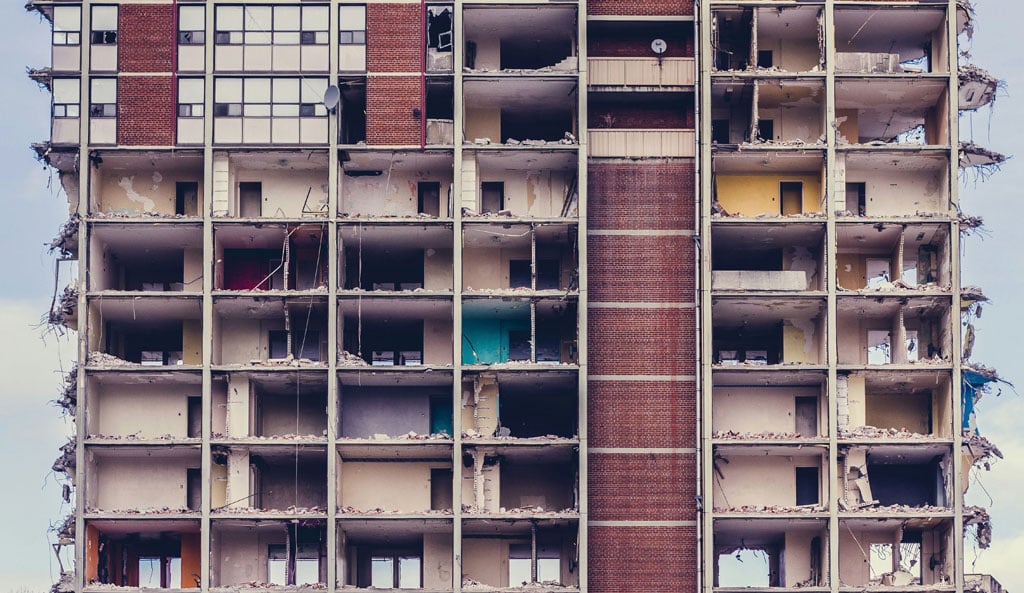Prime
This is why apartment living is different for the poor

Among the problems are quality of workmanship and management of property. PHOTO/unsplash.com
What you need to know:
Apartment living is the new norm. As the nursery rhyme says, when it is good it is very, very good, but when it is bad it is horrid. If these homes are poorly designed, poorly built, poorly maintained or poorly managed, they are poor places to live
There has been a lot of talk about apartment living of late. Whether it is millennials who cannot afford to buy a house, downsizers making a lifestyle change, owner-occupiers struggling to get defective buildings fixed, or foreign investors buying into new development, there’s no shortage of opinions and interest. Except for one group; lower-income and vulnerable residents.
Why does this matter?
It matters because some things about apartment and townhouse living are fundamentally different to living in a house. These differences have particular impacts on lower-income and vulnerable people living in higher-density housing.
The significant differences include:
You live closer to your neighbours, so it is more likely you will see, hear or meet them.
You share services and spaces with neighbours, from gardens to laundries to lifts.
You have to co-operate with other residents and owners to manage and pay for building operation and upkeep.
If you live in a private apartment building then the fact that a large proportion of apartments are sold to investors and rented out will likely have three key impacts on you:
Developers often cater for investors when designing new apartment buildings, so you will likely find a limited variation in apartment designs and sizes available.
Resident turnover in your building may be high, as private renters move more frequently.
Tensions between owner-occupiers and investor-owners may result in disagreements and disputes over budgeting and maintenance.
While these unique aspects of higher-density living can be tricky for anyone, they present particular challenges for lower-income and vulnerable residents.
Building flaws affect some residents in particular
Poor building quality is one of the major issues in high-density development in Australia. The problems relate to design, defects and maintenance.
The design issues include noise disturbances as a result of poor design, inadequate solar access and cross ventilation, the availability and flexibility of shared spaces, and safety and security considerations.
Another issue is design that fails to help meet the needs of particular groups (such as people with a disability, and families with children).
Beyond design, the construction quality of higher-density developments is a major issue in Australia. Key concerns include the quantity and severity of building defects, as well as the difficulties owners face having defects fixed.
Among the problems are quality of workmanship, management of construction, private certification, limited warranties and the often-prohibitive cost of legal action.
As with poor design, lower-income households are particularly susceptible to construction issues. This is because there are more incentives to cut corners when constructing more affordable housing. Examples include rushing jobs, hiring cheaper but less experienced tradespeople, or using substandard materials.
Lower-income renters are also likely to be over-represented in poorly maintained buildings, as these are usually cheaper to rent. Compared to a detached house, maintenance in higher-density properties is complicated by the complexity of the buildings themselves and the governance structures.
As a result, required maintenance work is often not carried out, or is reactive rather than proactive. This is especially true in buildings occupied by lower-income renters with no direct recourse to the strata committee. They often cannot afford to move and may fear retaliatory rent increases if they report maintenance issues.
Social relations can be challenging
Neighbour disputes happen everywhere, but evidence suggests disputes are more common in areas with more lower-income and vulnerable residents and with more apartments.
Common causes of neighbour conflict in higher-density housing reflect different expectations about noise levels, parking practices, or spending on maintenance and improvements.
Neighbour disputes can have significant impacts on health. This potentially counteracts the health benefits associated with the walkable nature of many higher-density neighbourhoods.
Apartment residents must negotiate disputes, and not everyone is equally well placed to do so. When disputes arise, the number of stakeholders involved complicates efforts to find a resolution. They might include renters, resident owners, investor owners, building managers, strata managers and strata committee members.
Research with strata residents shows residents find formal dispute resolution mechanisms complex and slow. Most disputes are resolved informally.
Lower-income residents, and renters in particular, are likely to have less influence over the outcomes of such processes.
Fostering positive neighbour relations can be more difficult where resident turnover is high, such as in buildings dominated by private renters. It is also more difficult in poorly designed buildings without quality shared spaces.
New norm promotes inequity
The market-led housing model that underpins city policies has meant that people with less money get a poorer product. Few planners or politicians have adequately acknowledged these inequities.
Maintenance
Once residents move in, negotiating to fix defects is particularly difficult for private renters, as they typically must go through the real estate agent or landlord. This means renters may be stuck with unsatisfactory living conditions.
They tend to have less choice about their living arrangements, so they cannot up and move to better-designed, constructed and managed properties if things are not working out.
This article was first published by theconversation.com





